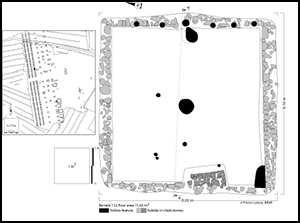Article contents
Firewood of the Napoleonic Wars: the first application of archaeological charcoal analysis to a military camp in the north of France (1803–1805)
Published online by Cambridge University Press: 15 September 2016
Abstract

This paper focuses on evidence from firewood remains from a Napoleonic camp located at Étaples (in the north of France), inhabited between 1803 and 1805. The combination of archaeological and relevant historical records indicates that wood resources, stockpiled for lighting and heating by the soldiers, may have originated from two distinct areas: the army's official forest and also the area around the camp, indicating possible difficulties in wood supply at the end of its occupation. This study, therefore, uses archaeological charcoal to reinforce military historical sources in understanding firewood economy and the harsh everyday life of the Napoleonic soldier at the beginning of the nineteenth century.
- Type
- Research
- Information
- Copyright
- Copyright © Antiquity Publications Ltd, 2016
References
- 3
- Cited by


